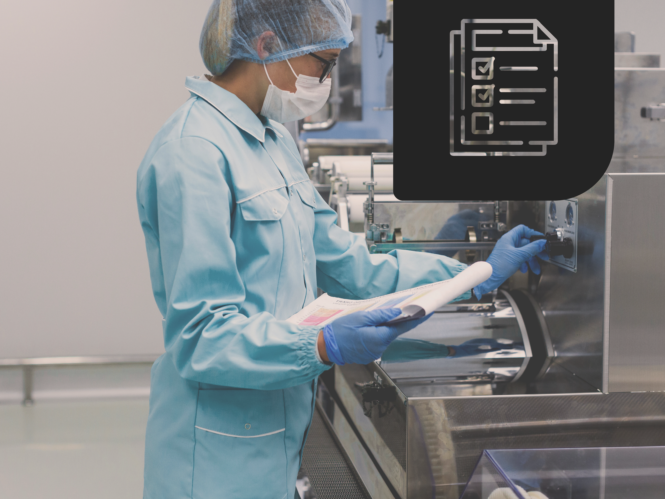Validation of analytical procedures according to the ICH guidelines
20/02/2020

Since 1990, the International Council for Harmonisation of Technical Requirements for Pharmaceuticals for Human Use (ICH) has been issuing guidelines for the harmonisation of procedures within the pharmaceutical industry.
When a pharmaceutical product is placed on the market, the manufacturer must ensure that it complies with the applicable regulations and specifications. It is in this framework that analyses are performed at all stages of production, from receipt of the raw materials to the release of the finished product and through the key intermediary stages.
Different types of analyses can be carried out depending on the stage of the production cycle: qualitative or quantitative physical, chemical or microbiological analyses. For routine analyses, the regulations require analytical validation of the procedures implemented to ensure results are reliable.
The following table gives a rationale associated with each validation criterion in order to demonstrate the importance of validating a procedure.
| Criteria | Methodology | Relevance |
| Specificity | Independently analyse all of the known substances that may be contained in the finished product. Then analyse the mixture of the finished product and the known substances (at the level defined in the specifications if possible, for impurities). | It is important to prove that the primary product can be analysed with the same reliability, whether it is alone or in the presence of its secondary products. A specific procedure shall demonstrate the lack of interference when the primary product is analysed in the presence of its secondary products. |
| Linearity | Analyse at least five concentrations of the primary product, covering the selected validation range and including the nominal concentration. Evaluate the linearity of the procedure using linear regression, for example. | An analytical response absolutely must be proportional to the concentration of the analyte. A linear procedure ensures a reliable result for a range of concentrations. For example, impurity B, which is always found at different levels depending on the batch of a finished product A, will be quantified with the same precision regardless of the quantity of B in A. |
| Validation range | The validation range is the range of concentrations in which the procedure is said to be validated. Outside of this range, the procedure is not considered validated. The range is defined during the evaluation of linearity and trueness. | The validation range must absolutely be respected because any analytical procedure has limits of use. Indeed, a procedure is sometimes no longer linear at very low or very high concentrations, for example. The same is true for accuracy. The validation range therefore enables limits of use to be set for the procedure. |
| Accuracy | Accuracy (or trueness) will be determined by comparing a theoretical concentration value with the experimental value. It is usually expressed as % recovery. This evaluation will have to be confirmed for at least nine preparations (in general three preparations on three levels) and should cover the validation range. | The accuracy of a procedure enables the difference between the analytical value and the “true” value to be determined. The dosing of a finished product, for example, should provide results that are very close to reality. Acceptance criteria shall be set taking into account the specifications for the product to be analysed. |
| Repeatability | The analysis should be performed six times at the nominal concentration, for example (from independent preparations), under the same conditions and in the same environment. | Repeatability is the criterion that confirms the precision of the analytical procedure. Indeed, it is essential to prove that an analysis repeated under the same conditions produces the same result. |
| Intermediate precision | The repeatability (or accuracy) part should be replicated in the same laboratory, including several changing external parameters, e.g. different technician, different day and/or different equipment. | Intermediate precision confirms the independence of the procedure with events external to the procedure itself within the same laboratory. Indeed, the analytical procedure should be reproduced with the same reliability regardless of the weather conditions, the technician performing the analysis, and the equipment (brand, model, etc.) used. |
| Reproducibility | The repeatability (or accuracy) part should be replicated in two different laboratories, including several external parameters that change, for example, the technician, day and/or equipment. | Reproducibility confirms the independence of the procedure between two laboratories. Very often, once validated, this criterion is used to guarantee the transfer of the procedure to the second laboratory. Validation is then called “co-validation”. |
| Limits of detection and quantification | The limit of detection is the lowest detectable concentration. The limit of quantification is the lowest quantifiable concentration. These thresholds will be determined by analysing the substance at progressively lower concentrations until the limits are reached. In order to confirm that these criteria have been met, the signal-to-noise ratio can be used, for example in chromatography. | Every analytical procedure has its own limits of reliability, precision, accuracy, etc. The limit of quantification is usually the lowest concentration in the validation range. As for the limit of detection, it is a way of confirming the presence of a substance in a finished product but without being able to quantify it. |
| Robustness | Robustness is studied by deliberately simulating minor variations in several parameters (one variation at a time). For example, a minor variation in a wavelength, pH, mobile phase or column temperature may be studied. | Robustness studies the influence of slight variations that can occur randomly in a laboratory. This helps prove that a procedure is more or less sensitive to the hazards that can disrupt the conditions of use. |
ICH Q2(R1) provides guidance as to the methodology to be applied for each validation criterion. Unfortunately, this guidance often remains very vague depending on the analytical procedure used.
Thanks to its experience, Efor offers high-quality support for the validation of analytical procedures by providing services tailored to the needs of our customers in the pharmaceutical sector.
Our teams are at your disposal to answer your questions and assist you.
Efor group
Our CSR commitments
Aware of our social and environmental responsibility, we act every day to make a positive impact on society.
Nos actualités
Suivez toutes nos infos santé


